Abstract
Miraglia, Gennaro J. (Bryn Mawr College, Bryn Mawr, Pa.) and L. Joe Berry. Enhancement of salmonellosis and emergence of secondary infection in mice exposed to cold. J. Bacteriol. 84:1173–1180. 1962.—The ld50 dose for mice of Salmonella typhimurium, strain RIA, is 4.1 × 105 for animals individually housed without bedding and maintained at 25 C. It is 3.8 × 103 for animals similarly housed but kept at 5 C. An intravenous injection of 0.1 ml of Proferrin 2 hr prior to infection with RIA lowers the ld50 to 4.9 × 103 and to 4.0 × 101 for mice kept, respectively, at 25 and at 5 C. Low environmental temperature and “blockade” of the reticuloendothelial system (RES) lower the resistance of mice to about the same degree, but low temperature and RES impairment together lower resistance as if each were acting independently. No effect of cold could be detected in mice infected with the highly virulent SR-11 strain of S. typhimurium, since all animals died after infection with only a few cells. Mice that were natural carriers of salmonellae, as judged by fecal discharge, were highly resistant to challenge and responded to cold in a manner similar to normal mice infected with RIA. Strain RIA could be isolated from the tissues of infected animals with greater frequency and persisted longer in mice maintained at 5 C than those at 25 C. Staphylococci were isolated from livers of animals that survived salmonella infection for 14 days at 5 C, and the incidence of staphylococci was proportional to the number of salmonellae injected. At 25 C, only a small percentage of mice had staphylococci in tissues and these occurred independent of the infectious dose of salmonellae. These observations were made on normal mice infected with RIA and on carrier mice infected with SR-11.
Full text
PDF
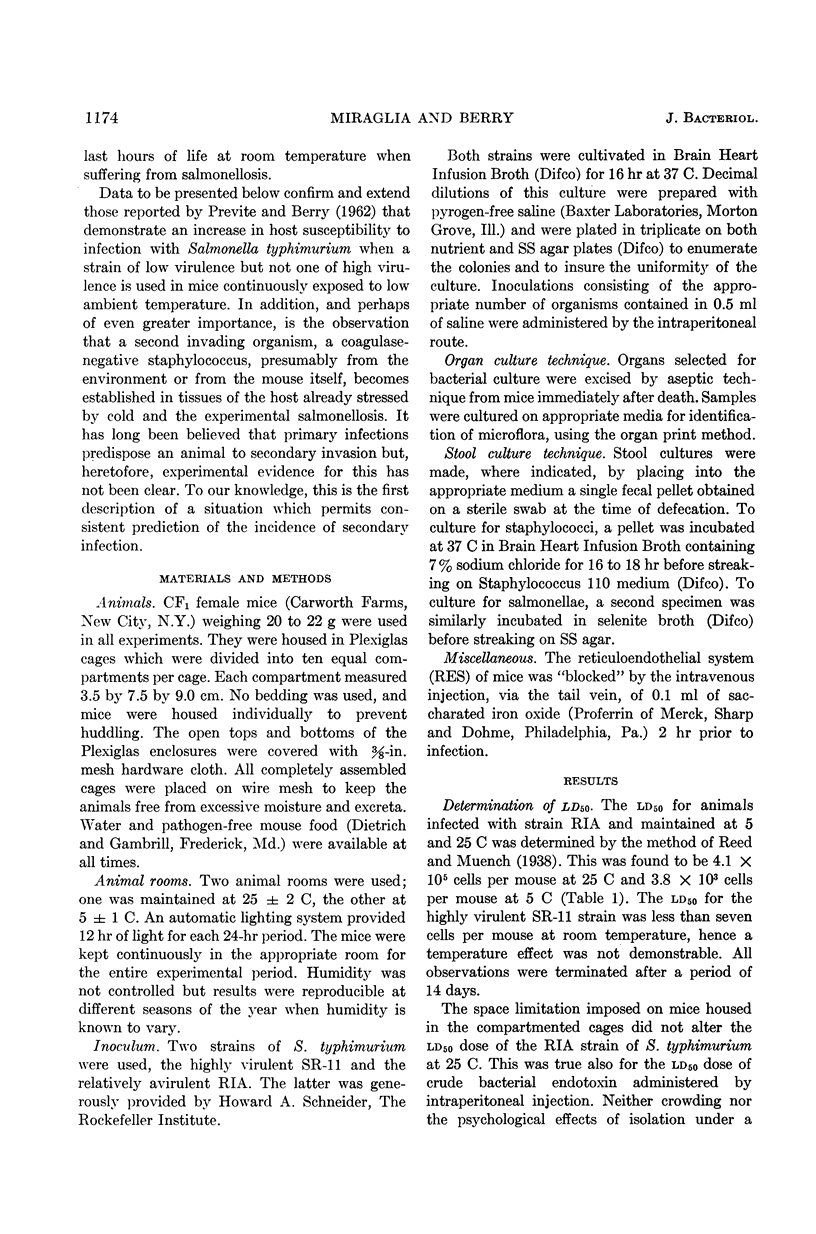
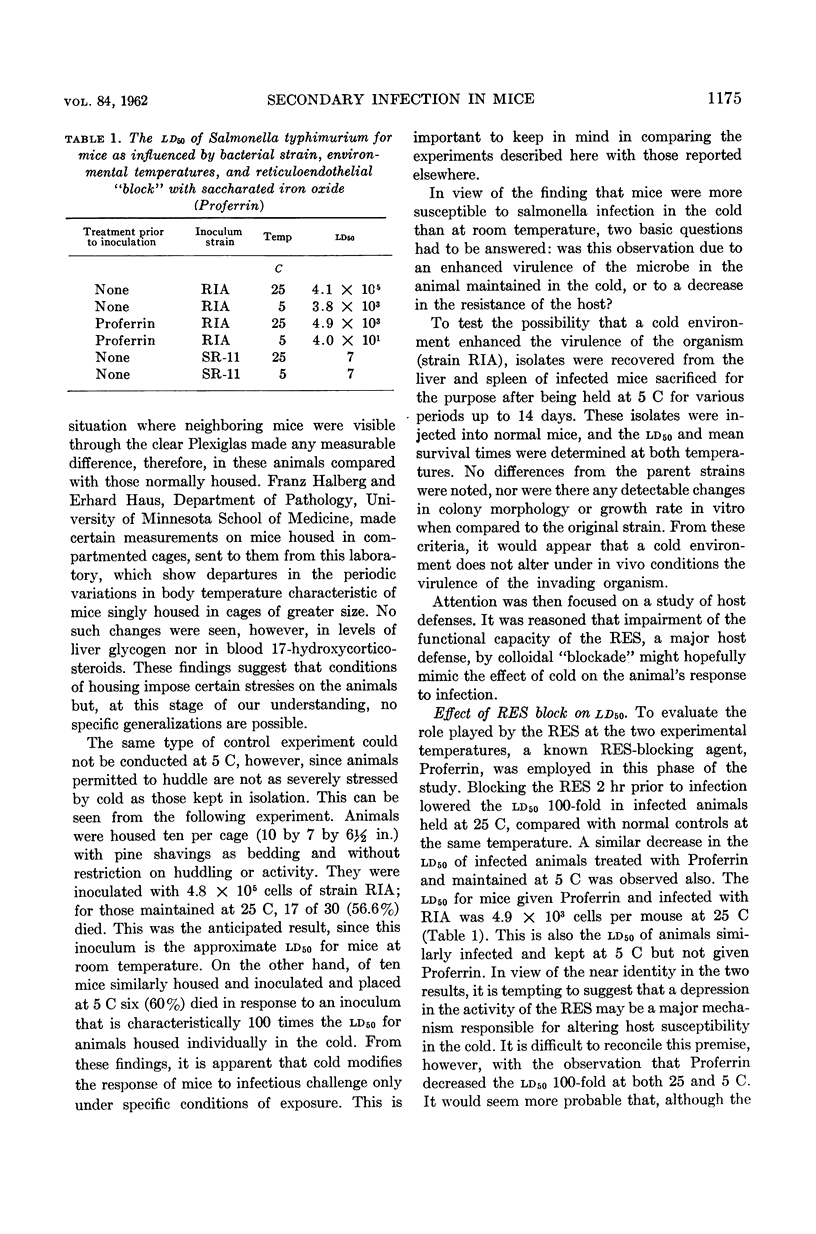
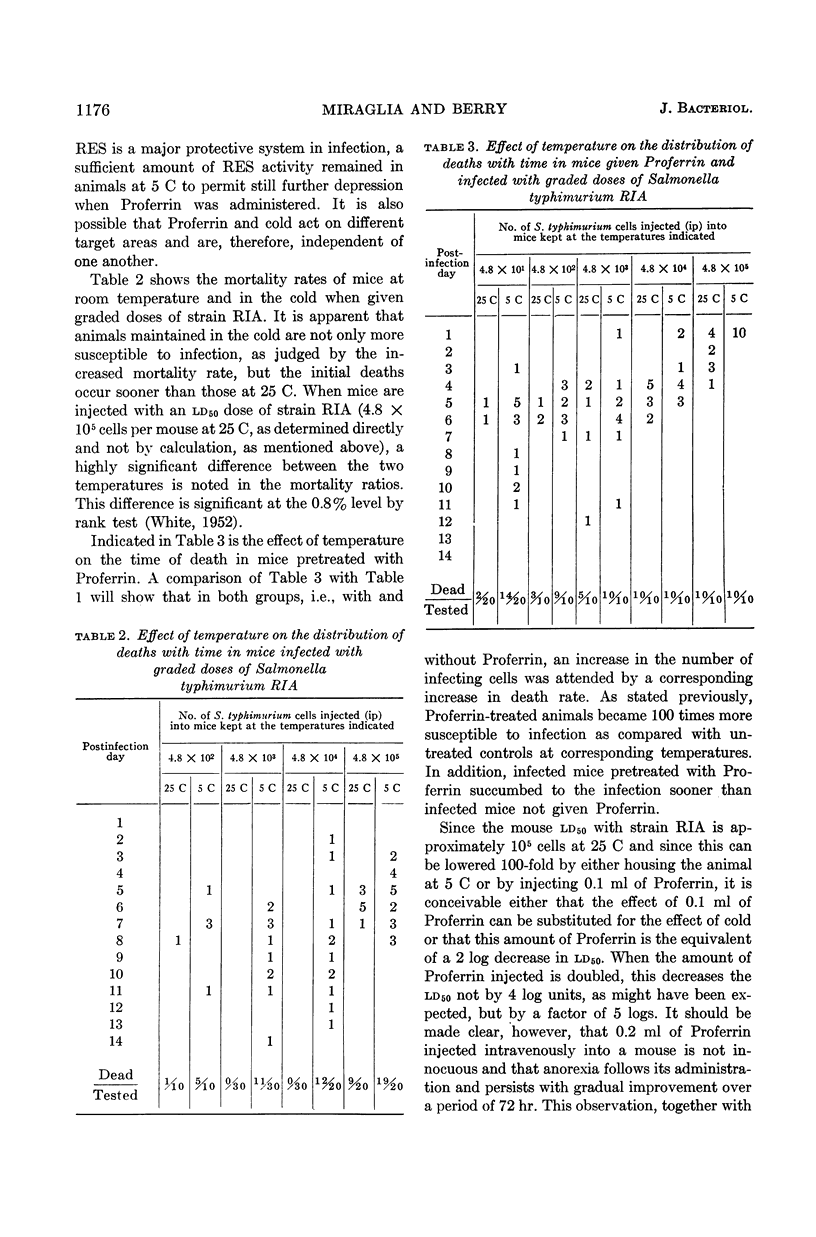
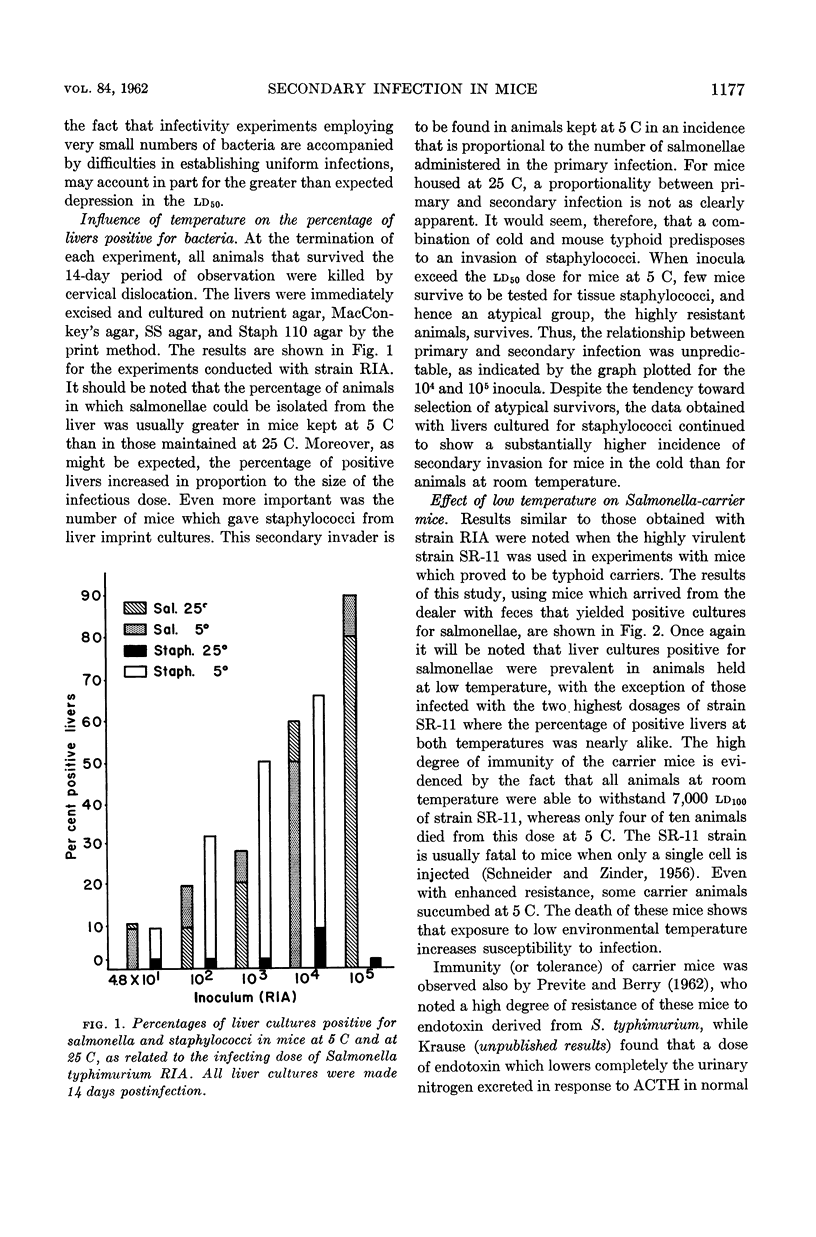
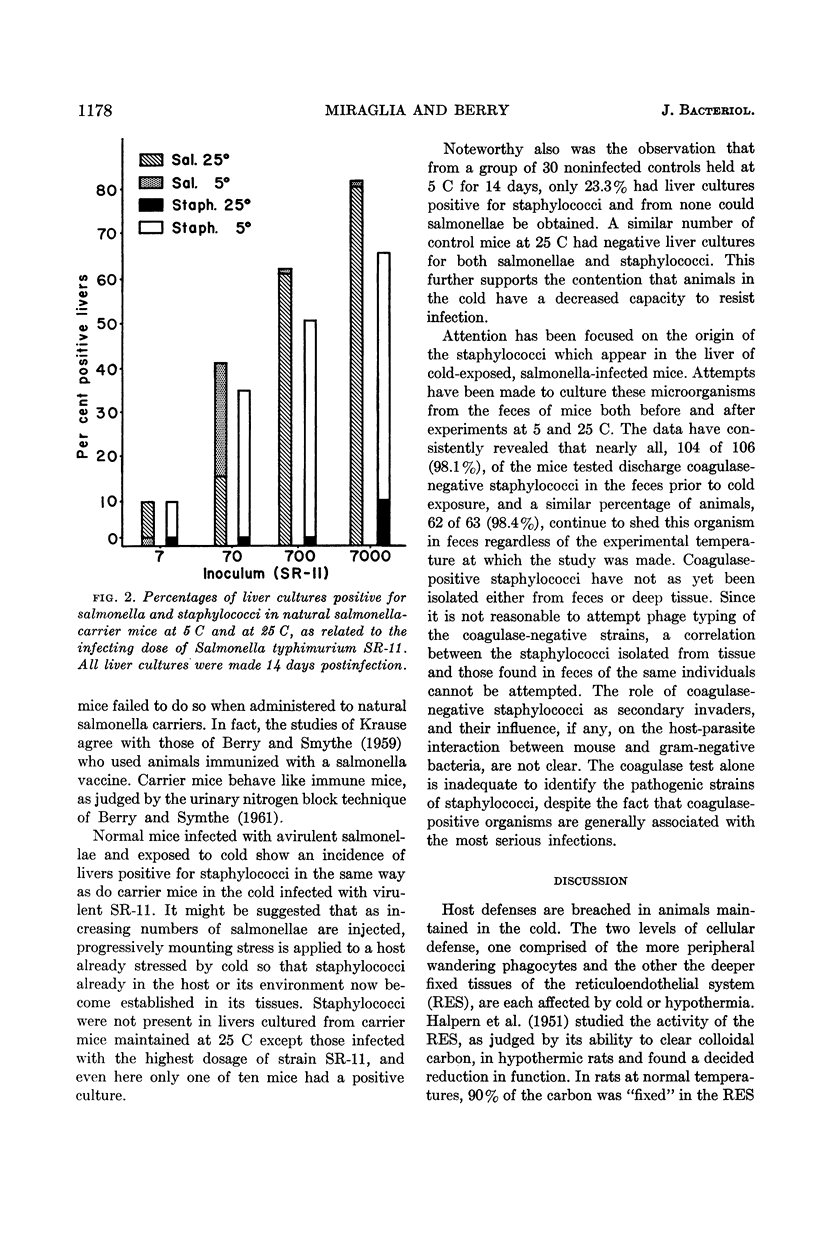
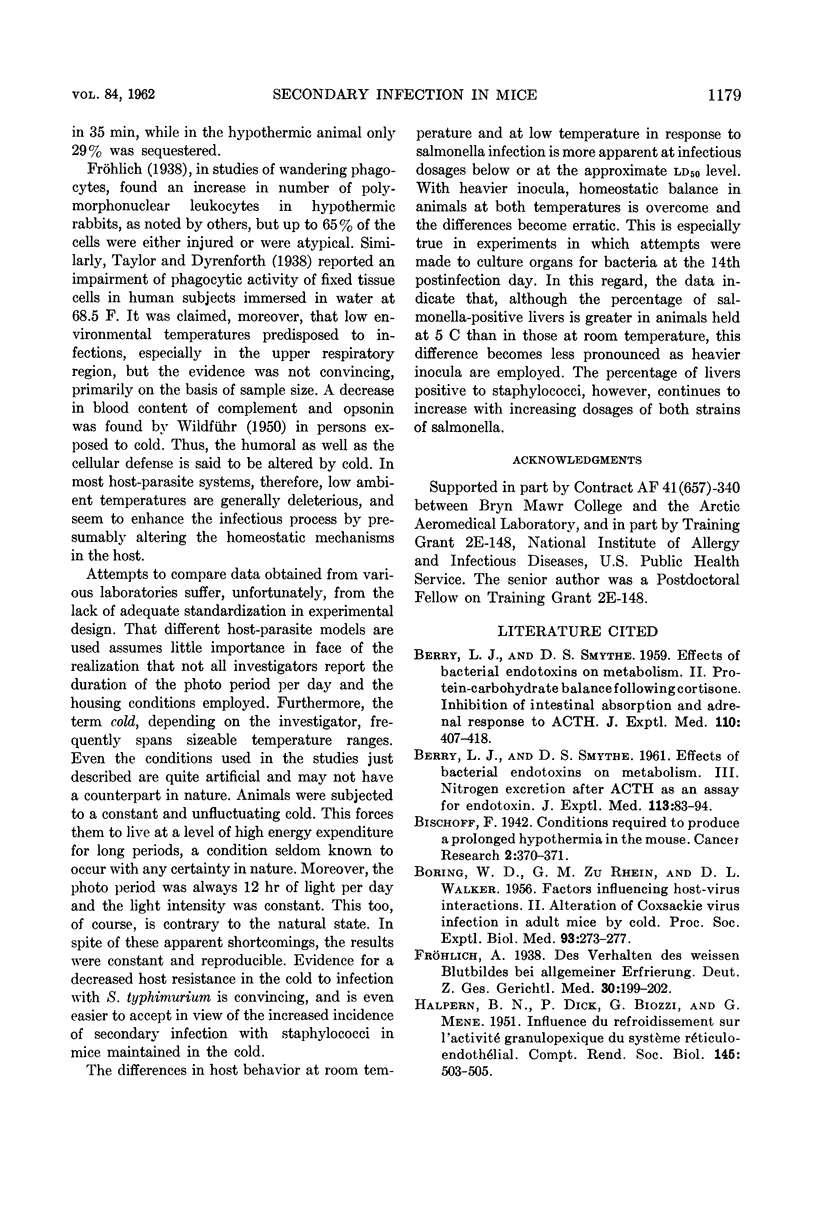
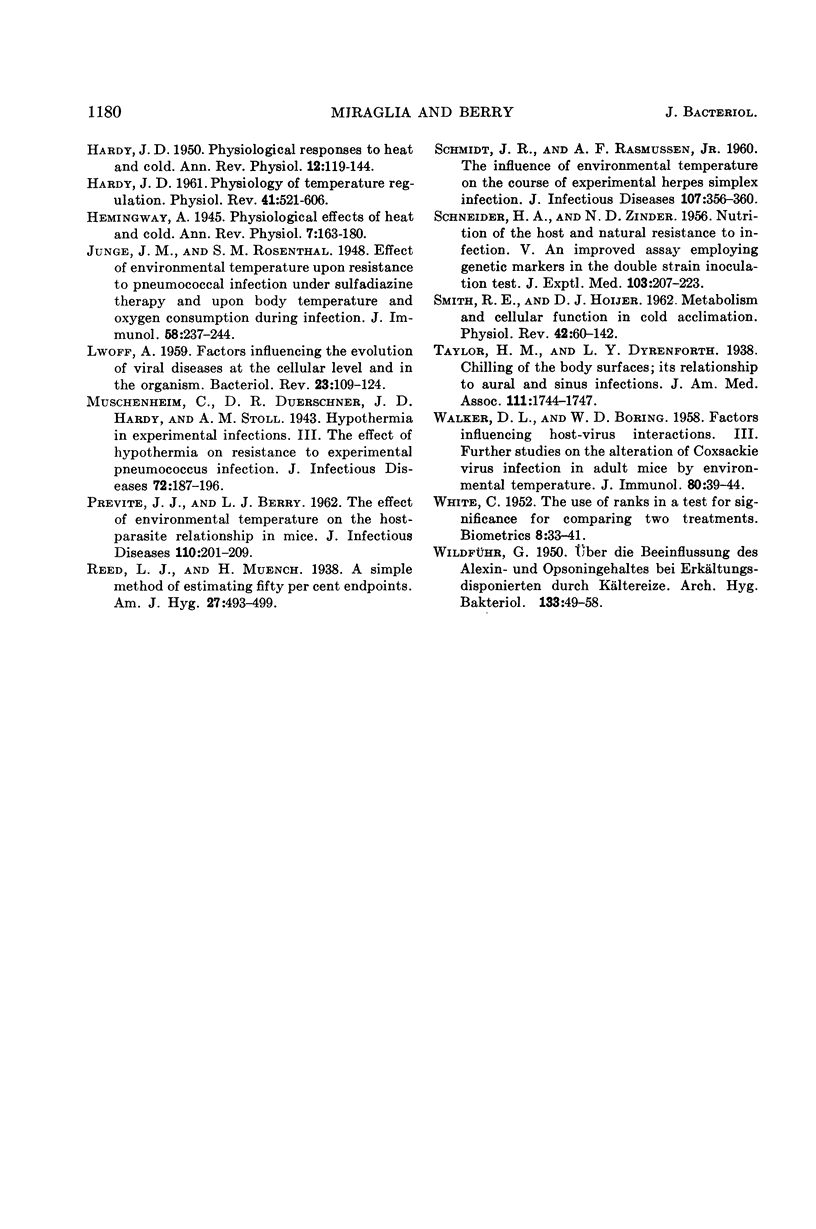
Selected References
These references are in PubMed. This may not be the complete list of references from this article.
- BERRY L. J., SMYTHE D. S. Effect of bacterial endotoxin on metabolism. II Protein-carbohydrate balance following cortisone. Inhibition of intestinal absorption and adrenal response to ACTH. J Exp Med. 1959 Sep 1;110:407–418. doi: 10.1084/jem.110.3.407. [DOI] [PMC free article] [PubMed] [Google Scholar]
- BORING W. D., WALKER D. L., ZU RHEIN G. M. Factors influencing host-virus interactions. II. Alteration of Coxsackie virus infection in adult mice by cold. Proc Soc Exp Biol Med. 1956 Nov;93(2):273–277. doi: 10.3181/00379727-93-22730. [DOI] [PubMed] [Google Scholar]
- HALPERN B. N., DICK P., BIOZZI G., MENE G. Influence du refroidissement sur l'activité granulopexique du système réticulo-endothélial. C R Seances Soc Biol Fil. 1951 Apr;145(7-8):503–505. [PubMed] [Google Scholar]
- HARDY J. D. Physiological responses to heat and cold. Annu Rev Physiol. 1950;12:119–144. doi: 10.1146/annurev.ph.12.030150.001003. [DOI] [PubMed] [Google Scholar]
- HARDY J. D. Physiology of temperature regulation. Physiol Rev. 1961 Jul;41:521–606. doi: 10.1152/physrev.1961.41.3.521. [DOI] [PubMed] [Google Scholar]
- LWOFF A. Factors influencing the evolution of viral diseases at the cellular level and in the organism. Bacteriol Rev. 1959 Sep;23(3):109–124. doi: 10.1128/br.23.3.109-124.1959. [DOI] [PMC free article] [PubMed] [Google Scholar]
- PREVITE J. J., BERRY L. J. The effect of environmental temperature on the host-parasite relationship in mice. J Infect Dis. 1962 May-Jun;110:201–209. doi: 10.1093/infdis/110.3.201. [DOI] [PubMed] [Google Scholar]
- SCHMIDT J. R., RASMUSSEN A. F., Jr The influence of environmental temperature on the course of experimental herpes simplex infection. J Infect Dis. 1960 Nov-Dec;107:356–360. doi: 10.1093/infdis/107.3.356. [DOI] [PubMed] [Google Scholar]
- SCHNEIDER H. A., ZINDER N. D. Nutrition of the host and natural resistance to infection. V. An improved assay employing genetic markers in the double strain inoculation test. J Exp Med. 1956 Feb 1;103(2):207–223. doi: 10.1084/jem.103.2.207. [DOI] [PMC free article] [PubMed] [Google Scholar]
- SMITH R. E., HOIJER D. J. Metabolism and cellular function in cold acclimation. Physiol Rev. 1962 Jan;42:60–142. doi: 10.1152/physrev.1962.42.1.60. [DOI] [PubMed] [Google Scholar]
- WALKER D. L., BORING W. D. Factors influencing host-virus interactions. III. Further studies on the alteration of Coxsackie virus infection in adult mice by environmental temperature. J Immunol. 1958 Jan;80(1):39–44. [PubMed] [Google Scholar]
- WILDFUHR G. Uber die Beeinflussung des Alexin- und Opsoningehaltes bei Erkältungsdisponierten durch Kältereize. Arch Hyg Bakteriol. 1950;133(1):49–58. [PubMed] [Google Scholar]


